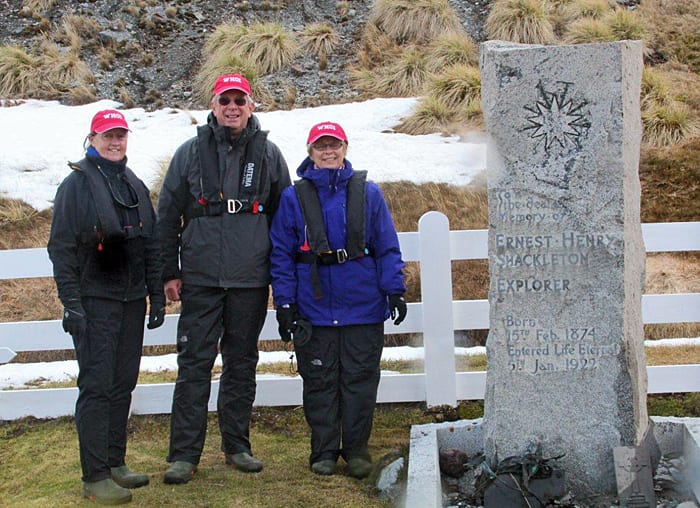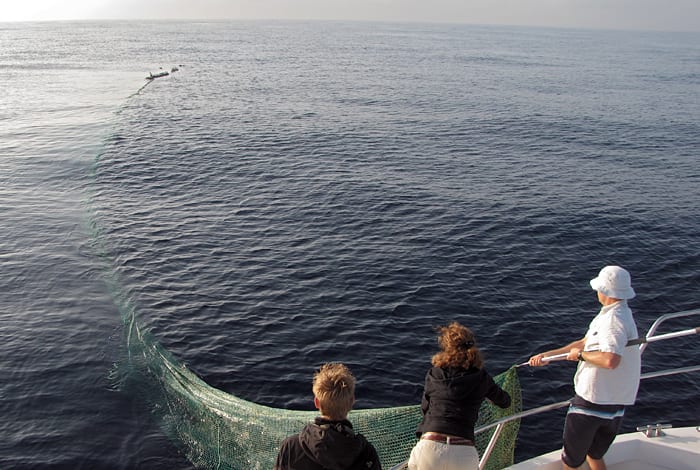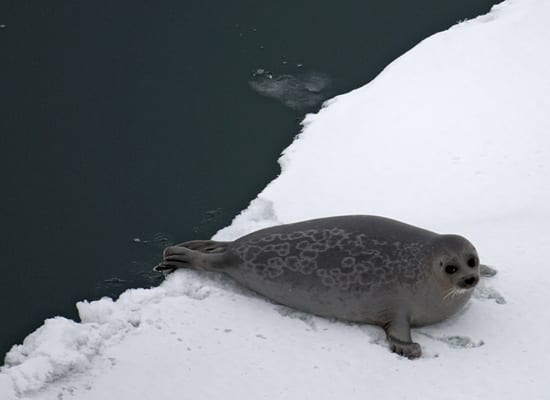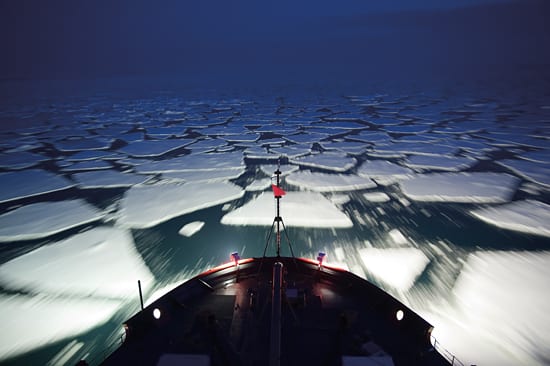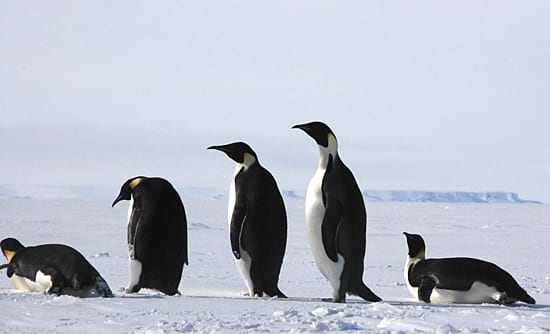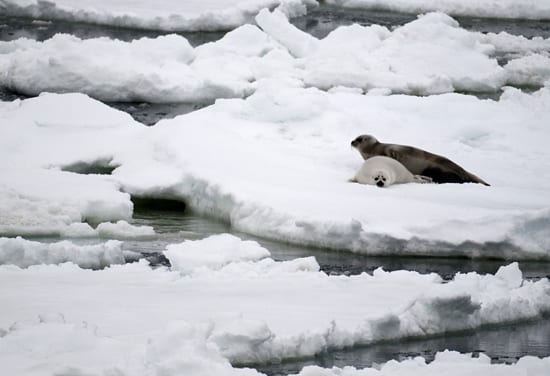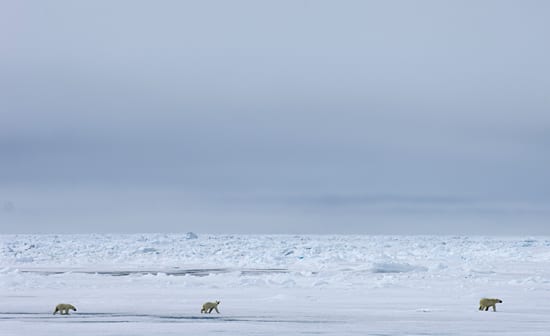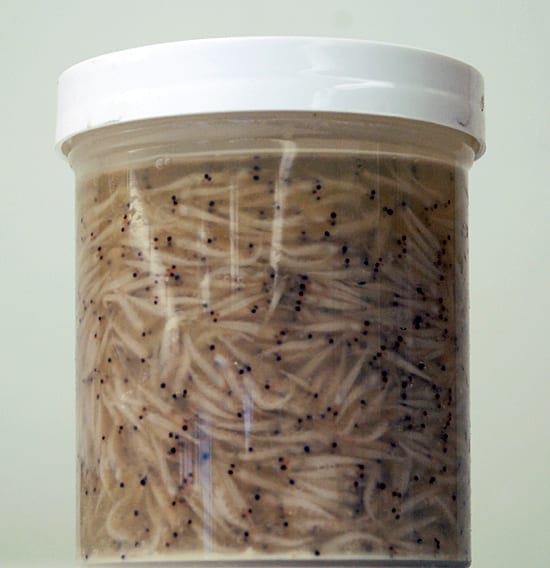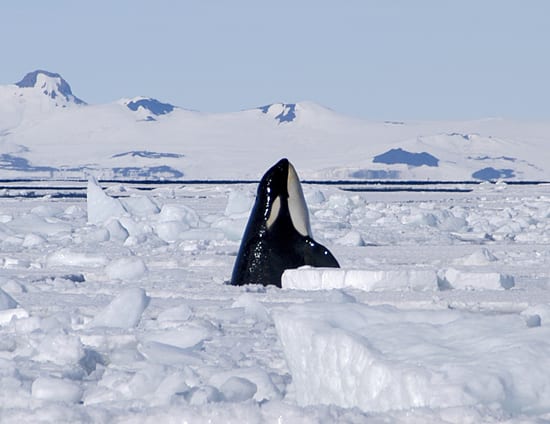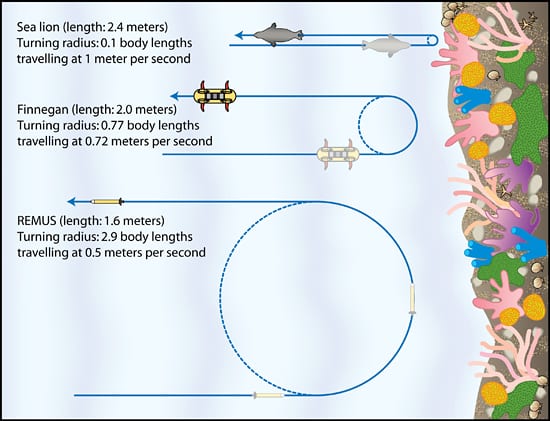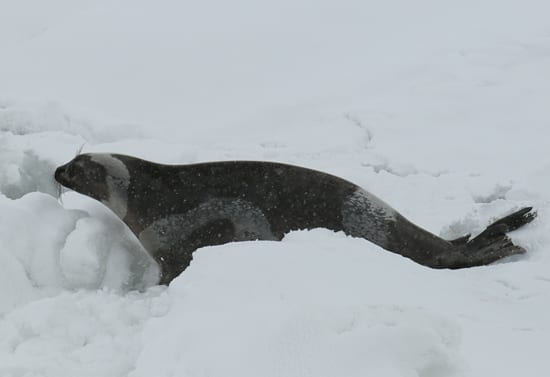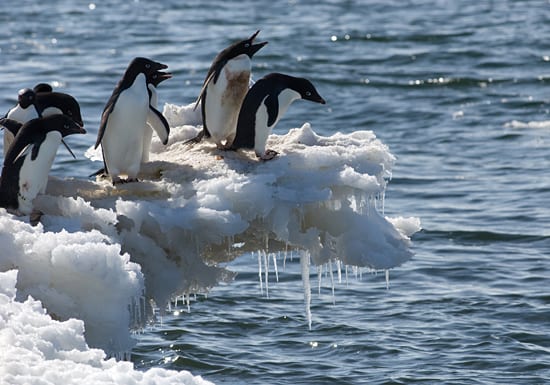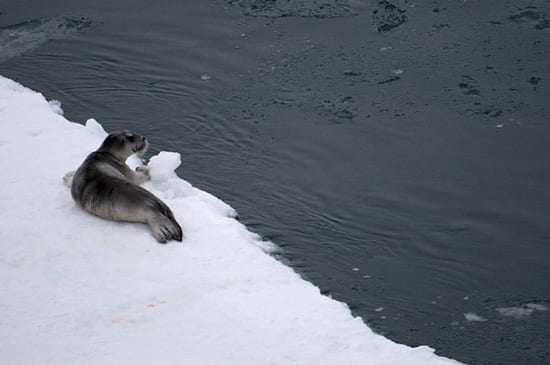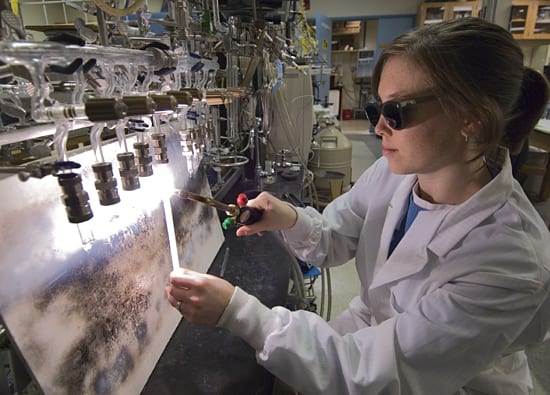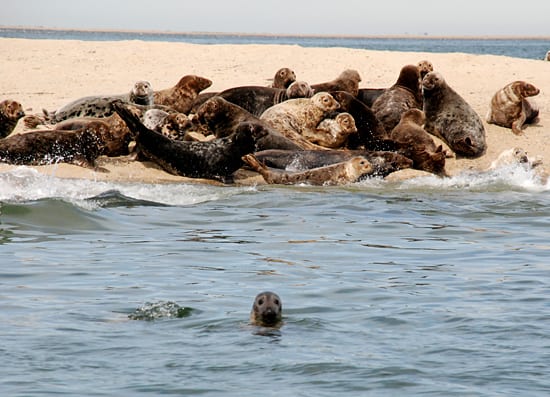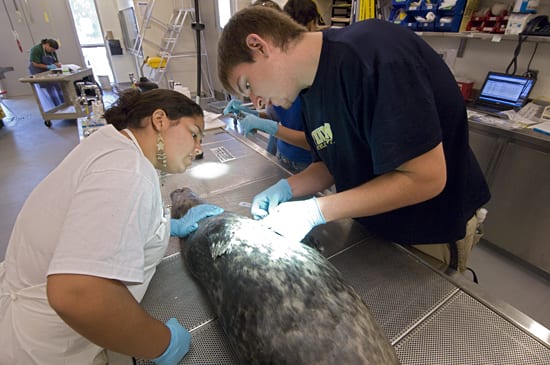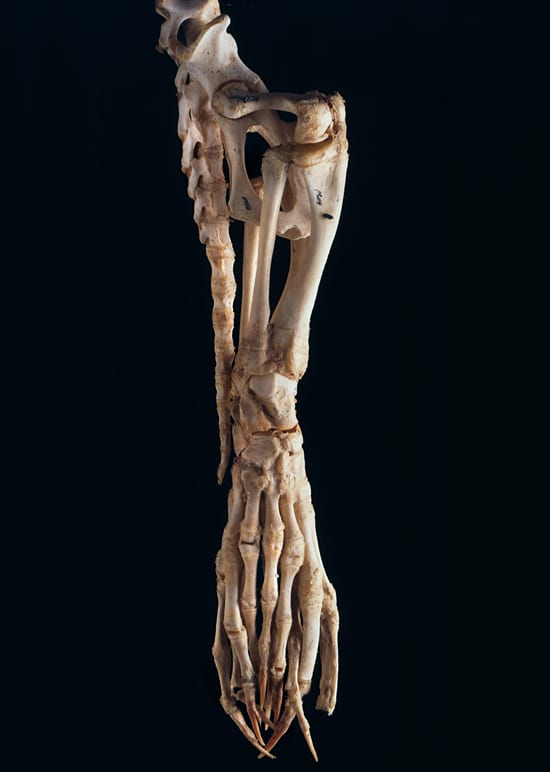Multimedia Items
In Shackleton’s Footsteps
WHOI Senior Scientist Susan Humphris, Board of Trustees Chairman Newt Merrill and Director Susan K. Avery (left to right) followed in the footsteps of British Antarctic explorer Sir Ernest Henry Shackleton…
Read MoreGiving Marine Life a Ghost of a Chance
During a recent trip to the Mediterranean to study the social ecology of long-finned pilot whales and their reaction to the sound of predators, members of the MED-11 Alboran Sea…
Read MoreA Delicate Balance
Ringed seals, like the one pictured here, are the smallest and most common seals found in the Arctic. Their diets consist mainly of shrimp, krill and other small crustaceans and…
Read MoreInto thin ice
Bow lights show the way as the U.S. Coast Guard icebreaker Healy streaks through slim pancake ice in the nighttime Bering Sea. After long, dark winters, sunlight returns to the…
Read MoreSingle file line
For all its ice, cold, and six months of darkness, the oceans around Antarctica are teeming with life. Penguins, whales, and seals inhabit the area where sea ice meets open…
Read MoreCurious ribbons
Researchers aboard the U.S. Coast Guard icebreaker Healy spotted these two ribbon seals — a mother and her fat pup — during an April 2009 cruise to study how climate…
Read MoreSurviving melting ice
A recent U. S. Geological Survey study—using data from WHOI and other sources—determined that climate change in the Arctic is dramatically reducing polar bears’ survival and reproductive rates. The study…
Read MoreThe eyes have it!
Krill are very small crustaceans of the sea that eat even smaller creatures called phytoplankton. Krill play a major role in the food chain because they provide food for a…
Read MoreOrca rising
Orcas (Orcinus orca) are toothed whales that hunt large single prey, such as fish, squid, penguins and seals. Marine chemist Mak Saito photographed this Orca on McMurdo Sound sea ice…
Read MoreFlapping Finnegan
Turtles, dolphins, and seals are masters at maneuvering in the water. So it’s no surprise that Stephen Licht, then a graduate student in the MIT/WHOI Joint Program, looked to them…
Read MoreRibbons and beaus (and pups)
Seeing ribbon seals up close was a special treat for researchers aboard the U.S. Coast Guard icebreaker Healy during a April 2009 cruise in the Bering Sea. Ribbon seals are…
Read MoreNo, no, YOU go first
One Adelie penguin looks doubtfully at the water while another cries out for it to get a move on. No penguin wants to be the first one in, so they…
Read MoreArctic inchworm
Photographer Chris Linder and writer Helen Fields accompanied scientists studying the Bering Sea ecosystem in April and May 2009. Together they chronicled the cruise aboard U.S. Coast Guard icebreaker Healy,…
Read MoreBright Spot
Kristin Pangallo, a graduate student in the MIT/WHOI Joint Program, flame-seals a test tube while preparing samples for the National Ocean Sciences Accelerator Mass Spectrometer (NOSAMS) in February 2006. Located…
Read MoreA Bit of Sand and Sun
Grey seals congregate and relax on Billingsgate Shoal, near Wellfleet, Mass. WHOI biologists Andrea Bogomolni and Michael Moore have joined colleagues in screening seals and other marine animals and their…
Read MoreA Closer Look
2007 Summer Student Fellow Carolina Gutierrez assists Tom Siemens (Marine Animal Rehabilitation Center of the University of New England) with a necropsy on a seal. Dozens of animals, most often…
Read MoreBare Bones
The skeletal hind flipper of a harbor seal includes finger-like bones, as shown in this articulated display specimen plucked from a Woods Hole warehouse. WHOI biologists work with marine mammal…
Read MoreDinner Time
The most abundant zooplankton in Antarctic waters are Antarctic krill (Euphausia superba), a focus of Dive and Discover Expedition 10. These two-inch long pink crustaceans are the main food source…
Read More
